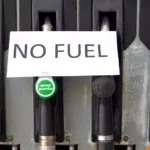
 Image Source: Pexels
Image Source: Pexels
The United States has had an industrial policy aimed at boosting its domestic shipbuilding industry since the passage of the Merchant Marine Act of 1920, commonly known as the Jones Act. Whatever the arguments for the passage of the bill a century ago, it has over time been a disaster for the US maritime industry, and continues to impose significant costs on other parts of the US economy. Colin Grabow goes through the arguments in “Protectionism on Steroids: The Scandal of the Jones Act” (Milken Institute Review, Second Quarter 2024, pp. 44-53).The Jones Act “requires that vessels engaged in domestic transportation be registered and built in the United States as well as crewed and at least 75 percent owned by U.S. citizens.” However, the underlying rule goes back to an 1817 law “prohibiting foreign vessels from transporting goods within the U.S.”The political problem back in 1920 was that as US shipbuilding and shipping costs were protected from foreign competition, they were no longer cost-competitive. in terms of production costs, and shipping by US-owned firms was not cost-competitive, either. Grabow gives an example of one 19th-century firm that shipped from New York to Belgium to California–because it was cheaper to pay for two “foreign” trips with non-US firms than to pay a US shipping firm to go direct from New York to California.The gap in US ship-building costs has only widened. Current estimates are that “large cargo ships constructed in U.S. shipyards today cost at least 300 percent more than the competitive world price.” For operating costs, Grabow cites a 2018 report from the Government Accountability Office which finds: “According to U.S. Maritime Administration (MARAD) officials, the additional cost of operating a U.S. flag vessel compared to a foreign-flag vessel has increased—from about $4.8 million annually in 2009 and 2010 to about $6.2 to $6.5 million currently—making it harder for such vessels to remain financially viable.”The consequences of this US attempt at a pro-shipbuilding and pro-US-shipping industrial policy have been awful. Here are some of them.1) The US shipbuilding industry, with no need to respond to international competition, has become irrelevant in global markets. Here’s a table on large ocean-going ships under construction from the Congressional Research Service (300 percent November 15, 2023). The CRS reports:
The CRS reports:
During World Wars I and II, the United States built thousands of cargo ships. These were sold to merchant carriers after the wars, including foreign buyers, but were soon replaced by more efficient ships built in foreign yards. In the 1970s, U.S. shipyards were building about 5% of the world’s tonnage, equating to 15-25 new ships per year. In the 1980s, this fell to around five ships per year, which is the current rate of U.S. shipbuilding. … The Jones Act’s domestic construction requirement likely underpins the entirety of U.S. commercial ship construction. None of the U.S.-flag international trading fleet is domestically built, though shipbuilders could take advantage of both the loan guarantee and tax shelter programs discussed above. No overseas purchase of large U.S.-built ships has occurred in decades because U.S.-built ships can be four or more times the world price.
Indeed, the US military relies on Chinese-built ships to support its military vessels: “Three of the ten commercial oil tankers selected to ship fuel for DOD as part of the newly enacted Tanker Security Fleet are Chinese-built. As for dry cargo supplies for DOD, 7 of the 12 most recently built ships in the Maritime Security Fleet are Chinese-built.2) The higher costs of Jones-Act-compliant US shipping naturally impose heavy costs on places like Hawaii, Alaska, and Puerto Rico. Weird consequences result, and Grabow provides a number of examples. Puerto Rico gets its liquified natural gas from Nigeria, because there are no Jones-Act-compliant US ships to transport natural gas within the United States. US lumber producers complain that they have a disadvantage vs. Canadian firms, because the US lumber producers must use higher-cost Jones Act ships to send their products to US destinations, while Canadian lumber producers can use cheaper international shipping companies.3) One might think that a natural transportation advantage for the United States would be to take advantage of maritime shipping via oceans on both sides. But the high cost of Jones-Act-compliant US shipping means more trucks and freight trains, with costs including traffic congestion, highway repair, and greater pollution.4) Various specialized uses of ships become more costly. For example, if you want offshore wind-power to be an important part of future US electricity generation, you should know that it is considerably more costly to build with Jones-Act-compliant ships. Even basic tasks like dredging US ports and rivers are slower and more costly because the Jones Act (along with some other legislation of that time) shuts off the supplier of higher-quality and lower-cost dredging ships made elsewhere.Supporters of industrial policy have a tendency to brush aside examples like the Jones Act: “Sure, that’s a foolish way to implement industrial policy, but my plan is a smart way to do so.” “Yes, the Jones Act is a problem, but the way to fix it is with much bigger government subsidies to expand US shipbuilding.” But the Jones Act is a classic example of a special interest law that benefits a small and very vocal group while imposing large but diffuse costs. The problems of the Jones Act have been well-known for decades, and nothing has changed. Every proposal for industrial policy faces similar political economy dynamics.Thus, it seems to me that the challenge for supporters of industry policy is not just to pick some alluring industries and then hand out government favors like Halloween candy, but to specify in advance how they intend to measure the success or failure of these subsidies–perhaps with a series of goals that must be met over time or else the subsidies get turned off. In South Korea, for example, which is often cited as an example of successful industry policy, the government subsidies for certain industries were often made contingent on the industries expanding their export sales at prevailing prices in international markets. When industrial policy goes poorly, as in the Jones Act, the costs are broadly felt across an array of related industries.More By This Author:The IMF Warns About U.S. Budget Deficits
Why So Many Shareholders Of US Firms Are Untaxed
Statistics Is Statecraft (Literally)
















